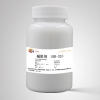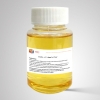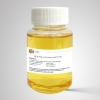The drag reduction mechanism of drag reducing agent.
Oil phase drag reducers are mostly fluidized or long straight chain polymers with few side chains. They are poly-_olefins with molecular weights ranging from 106 to 107. The polymer purifier is a rubber-like solid. As a commodity, it is usually dissolved in the solution of hydrocarbons (kerosene). 10% drag reducing agent solution is very viscoelastic, difficult to flow and can be drawn into long silk. Polymer drag reducers can dissolve in crude oil or oil products, but not in water. When water comes into contact, molecular long chain curls occur. The solution of drag reducer exhibits strong Newtonian property. The viscosity of the solution is as high as 3000Pa. S at low shear rate. It will not decompose below 120℃ and is relatively stable.
Drag reduction is a special turbulent phenomenon. drag reduction is a macroscopic manifestation of drag reduction affecting turbulent flow field, and it is a purely physical effect. The drag reducer molecule does not interact with the oil molecule, nor does it affect the chemical properties of the oil, but is closely related to its flow characteristics. In turbulence, the velocity of particles varies randomly, forming large and small vortices. Large-scale vortices absorb energy from the fluid and transform into small-scale vortices. Small-scale vortices, also known as dissipative vortices, are weakened and subsided by viscous forces. Some of the energy it carries is converted into heat and dissipated. In the boundary layer near the tube wall, the transformation is more serious due to the effect of shear stress and viscous force on the tube wall.
After the drag reducer is added to the pipeline, the drag reducer is dispersed in the fluid in a continuous phase. Depending on its unique viscoelasticity, the long chain of molecule flows downstream and naturally_-extends in a fluid-like state, and its micro-elements directly affect the movement of the fluid micro-elements. The radial force from the fluid element acts on the drag reducer element, causing it to twist and rotate. The intermolecular gravitational resistance of drag reducers reacts with the above forces on the fluid elements, changing the direction and size of the action of the fluid elements, so that part of the radial force is converted into the downstream axial force, thus reducing the consumption of useless power and reducing the loss of friction resistance on the macro level.
In laminar flow, the fluid is subject to viscous force, and there is no eddy dissipation like turbulence. Therefore, it is futile to add drag reducers. With the increase of Reynolds number entering turbulence, drag reducers show drag reduction effect. The larger the Reynolds number, the more obvious the drag reduction effect is. When the Reynolds number is quite large and the shear stress of fluid is enough to destroy the molecular chain structure of drag reducing agent, the drag reducing effect will decrease, or even lose the drag reducing effect completely. The concentration of drag reducer affects the thickness of elastic bottom layer formed in the pipeline. The greater the concentration, the thicker the elastic bottom layer, the better the drag reduction effect. In theory, when the elastic bottom reaches the axis of the tube, the drag reduction reaches the limit, that is, the maximum drag reduction. The drag reduction effect is also related to oil viscosity, pipe diameter, water content, pigging and other factors.





